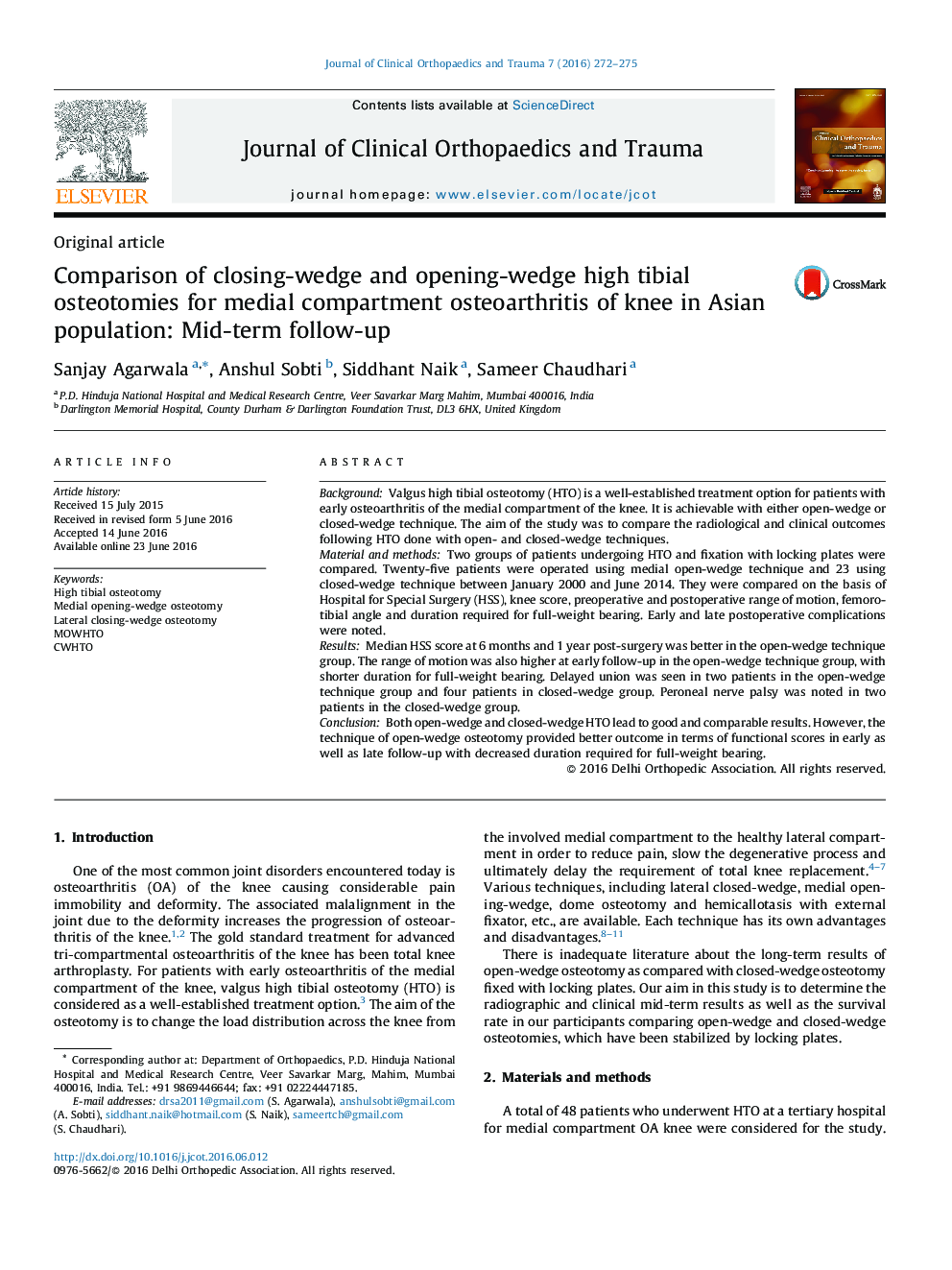| Article ID | Journal | Published Year | Pages | File Type |
|---|---|---|---|---|
| 5653353 | Journal of Clinical Orthopaedics and Trauma | 2016 | 4 Pages |
BackgroundValgus high tibial osteotomy (HTO) is a well-established treatment option for patients with early osteoarthritis of the medial compartment of the knee. It is achievable with either open-wedge or closed-wedge technique. The aim of the study was to compare the radiological and clinical outcomes following HTO done with open- and closed-wedge techniques.Material and methodsTwo groups of patients undergoing HTO and fixation with locking plates were compared. Twenty-five patients were operated using medial open-wedge technique and 23 using closed-wedge technique between January 2000 and June 2014. They were compared on the basis of Hospital for Special Surgery (HSS), knee score, preoperative and postoperative range of motion, femoro-tibial angle and duration required for full-weight bearing. Early and late postoperative complications were noted.ResultsMedian HSS score at 6 months and 1 year post-surgery was better in the open-wedge technique group. The range of motion was also higher at early follow-up in the open-wedge technique group, with shorter duration for full-weight bearing. Delayed union was seen in two patients in the open-wedge technique group and four patients in closed-wedge group. Peroneal nerve palsy was noted in two patients in the closed-wedge group.ConclusionBoth open-wedge and closed-wedge HTO lead to good and comparable results. However, the technique of open-wedge osteotomy provided better outcome in terms of functional scores in early as well as late follow-up with decreased duration required for full-weight bearing.
